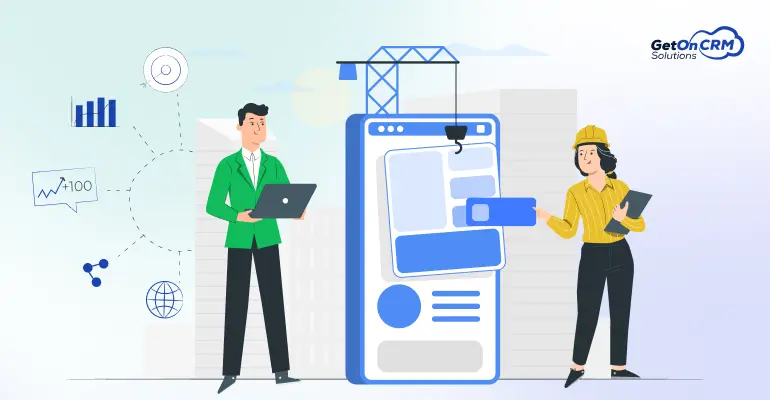In the dynamic world of healthcare, the integration of automation technologies has emerged as a pivotal factor in enhancing efficiency, accuracy, and patient care. However, the true potential of these advancements can only be realized when they are aligned with strategic planning. This article delves into the critical role of strategic planning in healthcare automation, aiming to provide healthcare providers with insights on bridging the gap between adopting cutting-edge automation technologies and formulating long-term strategic objectives.
Understanding Healthcare Automation
Healthcare automation refers to the application of technology to streamline and optimize various processes with in the healthcare sector. It includes everything from administrative tasks like scheduling and billing to more complex clinical processes such as diagnostics and patient monitoring. The recent surge in healthcare automation is fueled by advancements in artificial intelligence (AI), machine learning, and robotic process automation (RPA), transforming the way healthcare is delivered and managed.
Trends and Advancements Shaping the Future
The healthcare industry is witnessing a rapid adoption of technologies like AI-driven diagnostics, telemedicine, electronic health records (EHRs), and automated patient care systems. These technologies are not just enhancing operational efficiency but are also significantly improving patient outcomes. For instance, AI algorithms are now capable of diagnosing diseases with accuracy comparable to seasoned physicians, while telemedicine is making healthcare more accessible, especially in remote areas.
Impact on Healthcare Delivery
The impact of automation in healthcare is profound. It has led to reduced errors, lower operational costs, and improved patient care. Automation also plays a crucial role in handling the massive amount of data generated in healthcare, enabling providers to make more informed decisions and offer personalized care.
The Strategic Planning Imperative
Strategic Planning: The Backbone of Effective Healthcare
Strategic planning in healthcare involves setting long-term goals and determining the best course of action to achieve these objectives. It’s about understanding the healthcare landscape, anticipating future trends, and preparing for them. In the context of automation, strategic planning ensures that the adoption of new technologies aligns with the overall vision and mission of the healthcare provider.
Aligning Automation with Healthcare Goals
The key to successful automation lies in its alignment with the strategic goals of the healthcare organization. It means that technology should not just be adopted for its own sake but should serve a larger purpose – be it improving patient care, reducing costs, or enhancing operational efficiency.
Case Studies: Success Stories of Integration
Virginia Department of Health: Embracing Change Management for Automation
- Overview: The Virginia Department of Health implemented automation technologies to modernize its operations.
- Challenge: The primary challenge was driving workforce adoption of these new technologies.
- Solution: Key to their success was a strong focus on change management, ensuring that the staff was adequately trained and comfortable with the new systems.
- Outcome: The adoption of automation led to improved efficiency in healthcare delivery, better resource management, and a more future-ready workforce.
University Hospitals: Intelligent Automation for Enhanced Nursing Care
- Overview: University Hospitals implemented intelligent automation to streamline healthcare processes.
- Challenge: Nurses were spending a significant amount of time on data entry tasks rather than patient care.
- Solution: The hospital introduced automation for processing orders, which significantly reduced the administrative burden on nurses.
- Outcome: Over 57,000 orders were processed through automation, allowing nurses to focus more on patient care and less on administrative tasks.
Healthcare Organization Achieves 8X ROI with Intelligent Automation
- Overview: A healthcare organization implemented intelligent automation to improve efficiency.
- Challenge: The need to enhance operational efficiency and manage sophisticated business transactions.
- Solution: Deployment of bots via the cloud for various operational tasks.
- Outcome: The organization achieved an 8X return on investment (ROI), with immediate efficiency gains and a strong foundation for expanding automation.
Scalable Automation in Healthcare for Cost Reduction and Quality Improvement
- Overview: The healthcare industry is exploring scalable automation to make healthcare more affordable.
- Challenge: High administrative costs and the need for improved quality control.
- Solution: Implementing automation programs targeting operational improvements.
- Outcome: Significant opportunities for cost reduction, quality improvement, and achieving strategic objectives.
Bridging the Gap: Challenges and Solutions
Identifying the Gap in Automation Adoption
While the benefits of automation in healthcare are clear, there’s often a disconnect between the adoption of these technologies and the strategic planning required to maximize their potential. This gap can arise from various factors, including technological challenges, budget constraints, and resistance to change among staff.
Overcoming Common Challenges
- Technological Barriers: Healthcare providers may face difficulties in integrating new technologies with existing systems. Solution: Investing in interoperable systems and seeking expert consultation can ease this transition.
- Financial Constraints: The cost of implementing advanced automation technologies can be prohibitive for some providers. Solution: Exploring various funding options, including grants and partnerships, can provide financial support.
- Staff Training and Resistance: Introducing new technologies can meet resistance from staff accustomed to traditional methods. Solution: Providing comprehensive training and highlighting the benefits of automation in improving their workflow and patient care can encourage adoption.
Best Practices for Successful Integration
- Collaborative Approach: Involving all stakeholders, including healthcare professionals, IT staff, and management, in the decision-making process can ensure a smoother integration of automation technologies.
- Incremental Implementation: Gradually introducing new technologies can help staff adapt more quickly and allows for fine-tuning along the way.
- Continuous Training and Support: Ongoing training and technical support are crucial for the successful adoption and utilization of automation technologies.
Role of Data and Analytics in Strategic Planning
Harnessing the Power of Data
In today’s data-driven world, leveraging data and analytics is crucial for strategic planning in healthcare. Data analytics can provide insights into patient outcomes, operational efficiency, and financial performance, guiding healthcare providers in making informed decisions.
Predictive Analytics: A Game-Changer
Predictive analytics, using historical data to predict future events, is becoming increasingly important in healthcare. It can help in anticipating patient admissions, managing staff allocation, and even predicting disease outbreaks, thereby enabling proactive rather than reactive healthcare management.
Real-World Examples of Data-Driven Decision Making
Utilizing Real-World Evidence in Healthcare Decisions
- Overview: The healthcare industry increasingly relies on real-world data (RWD) and real-world evidence (RWE) to guide decisions across the healthcare value chain.
- Application: Physicians, providers, payors, regulatory bodies, and pharmaceutical manufacturers use RWE to make informed decisions about patient care, drug development, and healthcare policies.
- Impact: This approach has led to more personalized patient care, improved drug efficacy, and more efficient healthcare delivery systems.
Enhancing Patient Care with Faster Access to Real-World Evidence
- Overview: The integration of data federation and data products in healthcare allows for near-real-time insights.
- Challenge: Bridging the evidence gap in patient care.
- Solution: Using advanced data analytics tools to curate and democratize RWE data.
- Outcome: Improved decision-making for payers, providers, and life sciences organizations, leading to enhanced patient care and operational efficiency.
Data-Driven Decision-Making for Health Administrators
- Overview: The explosion of data in healthcare has transformed how health administrators make decisions.
- Application: Predictive analytics are used to forecast patient admissions, manage resources, and improve patient outcomes.
- Outcome: Data-driven approaches have become essential in healthcare administration, leading to more efficient and effective healthcare delivery.
Big Data Analytics in Healthcare
- Overview: Big Data Analytics is increasingly being used to gain insights into clinical data.
- Application: It facilitates informed decision-making about diagnosis, treatment, disease prevention, and operational efficiency in healthcare organizations.
- Outcome: The use of Big Data Analytics has improved patient care, disease management, and the overall efficiency of healthcare organizations.
Also Read: Advancing Patient Care In A New Era Of Healthcare Automation
The Human Element in Automation
Balancing Technology with Compassionate Care
While automation brings efficiency and accuracy, it’s vital to maintain the human element in healthcare. Technology should augment, not replace, the human touch in patient care.
Ethical Considerations in Automation
As healthcare providers adopt more automated systems, ethical considerations, such as patient privacy and data security, become increasingly important. Ensuring these technologies are used responsibly is paramount.
Enhancing Patient Experience
Automation can significantly enhance the patient experience. For example, automated appointment reminders and faster check-in processes can make healthcare more patient-friendly.
Future of Healthcare: Automation and Beyond
Emerging Technologies in Healthcare
The future of healthcare is being shaped by emerging technologies such as Artificial Intelligence (AI), the Internet of Things (IoT), and blockchain. These technologies promise to revolutionize patient care, enhance data security, and streamline operations. For instance, AI can assist in early disease detection, while IoT devices can continuously monitor patient health, providing real-time data to healthcare providers.
Preparing for Future Trends and Challenges
To stay ahead, healthcare providers must be proactive in adopting these technologies. That involves not only investing in new systems but also training staff and updating policies to accommodate these changes. It’s also crucial to stay informed about the latest trends and be ready to adapt to the evolving healthcare landscape.
Vision for the Future of Automated Healthcare Systems
The ultimate goal is a healthcare system that is efficient, patient-centered, and adaptable. Automation, when strategically implemented, can lead to a future where healthcare is more accessible, personalized, and effective.
Salesforce Consulting Services: A Strategic Partner in Healthcare Automation (GetOnCRM Solutions)
GetOnCRM Solutions, a provider of Salesforce consulting services, plays a crucial role in the realm of healthcare automation. By offering tailored Salesforce solutions, GetOnCRM assists healthcare providers in streamlining their operations, managing patient data more effectively, and ultimately delivering better patient care.
The Role of Salesforce in Strategic Planning and Automation
Salesforce services offer a range of tools that are crucial for healthcare providers looking to integrate automation into their strategic planning. These tools can help manage patient relationships, analyze healthcare data, and improve communication across departments, ensuring a seamless integration of technology into healthcare services.
GetOnCRM Solutions has a track record of aiding healthcare providers in their journey towards automation. For example, a healthcare client utilized Salesforce services to automate patient data management, resulting in improved data accuracy and a significant reduction in administrative workload.
Conclusion
The integration of automation in healthcare, when aligned with strategic planning, can lead to significant improvements in patient care and operational efficiency. By understanding the challenges and embracing the solutions, healthcare providers can effectively bridge the gap between automation adoption and strategic planning.
Healthcare providers are encouraged to take proactive steps toward this integration. That involves staying informed about the latest technologies, involving all stakeholders in the planning process, and seeking expert consultation when needed.
The future of healthcare is bright with the promise of automation. As we move forward, it’s essential to keep the focus on improving patient care and making healthcare more accessible and efficient.



















